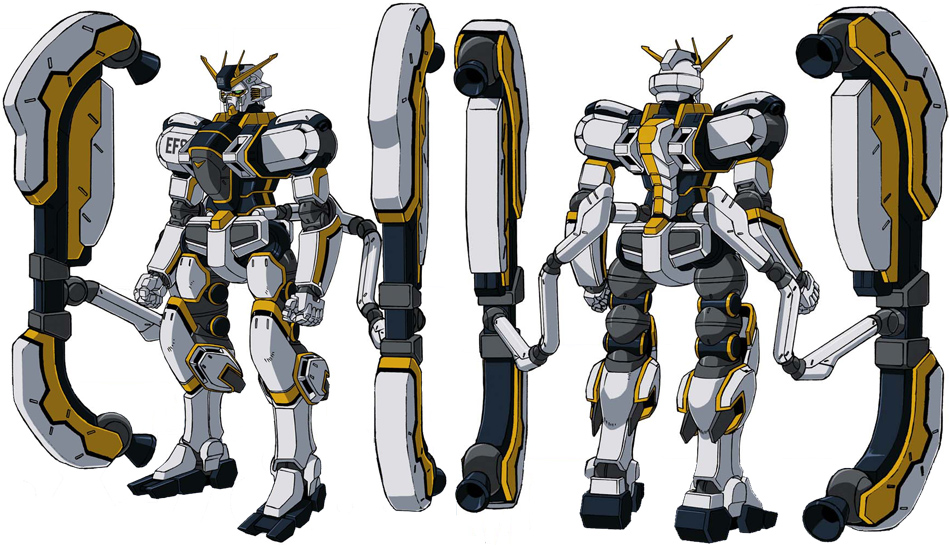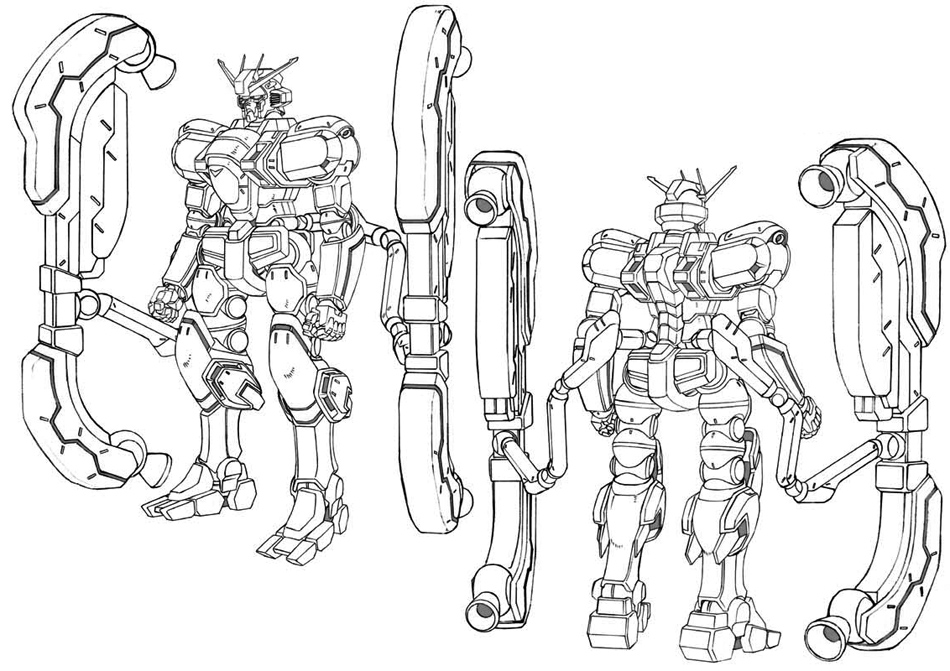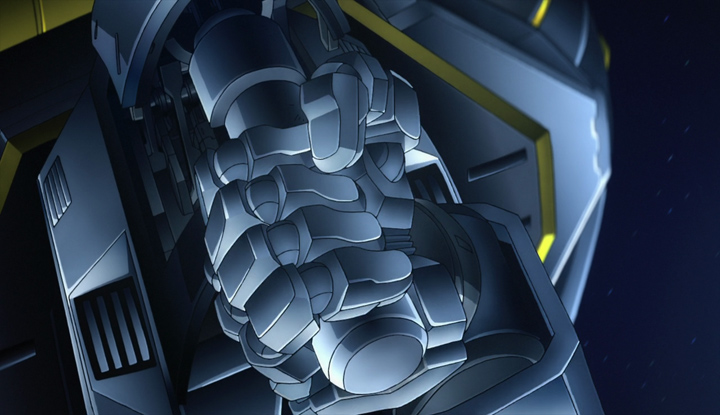RX-78AL ATLAS GUNDAM

![]()
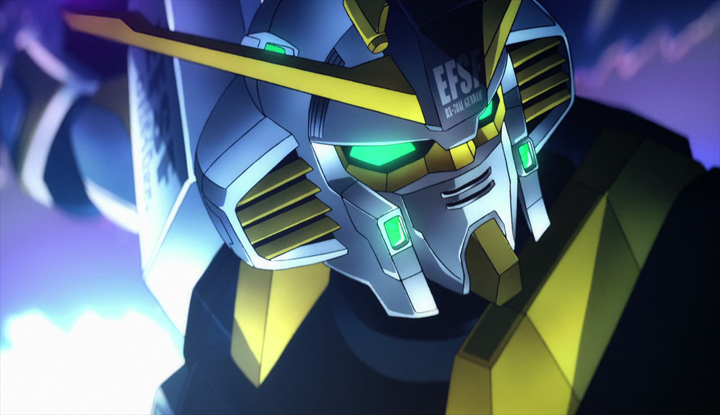 |
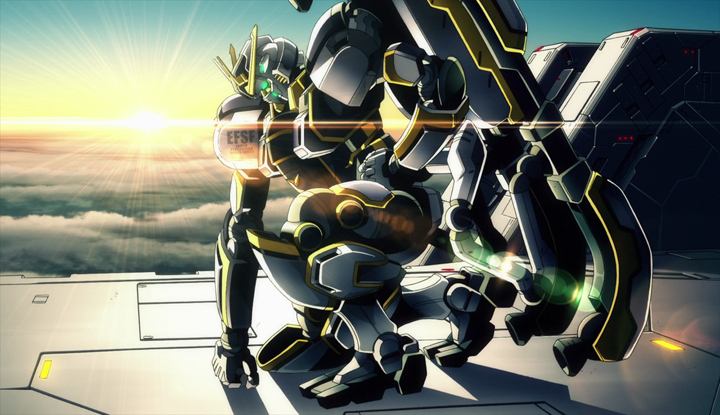 |
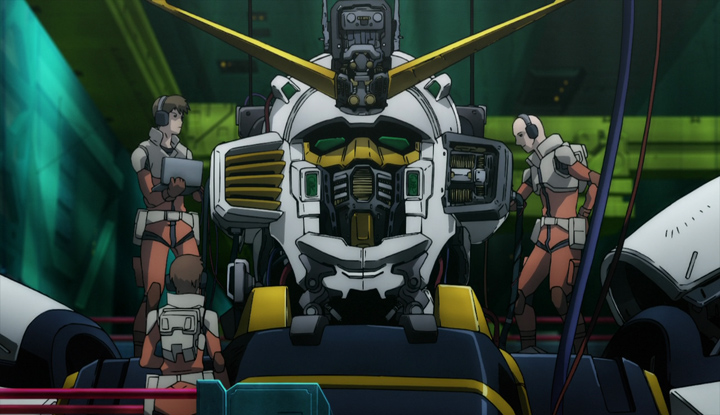 |
|---|
A newly developed Gundam type prototype mobile suit that fuses technology of the Earth Federation Forces and Principality of Zeon. It demonstrates outstanding performance under gravity including aerial and underwater environments. Boasting not only high performance that is characteristic of a Gundam type, ambitious attempts were made such as the adoption of spherical joints, the mounting of sublegs, the use of a panoramic monitor in the cockpit, and the equipping of a huge rail gun and blade shield.
The backbone-like frame that is modeled after a spinal cord as well as the spherical joints are technology adopted from the Principality of Zeon’s amphibious mobile suits. This structure gives the Atlas Gundam extremely advanced thrust flexibility and underwater operability.
The sub legs, characterized in appearance with their spherical joints, is a versatile support equipment for exclusive use under gravity and is fitted with a flight unit that is almost the same size as the mobile suit at its tips. By changing the position using the movable arms, it is possible to effectively utilize it in ways such as a simple transformation into a submersable mode when coupled with the exclusive use shield or flight or hover modes when “worn” on the suits legs.
Having been completed through funding by the Moore Brotherhood, the Atlas Gundam was deployed with the assault landing ship Spartan for “Operation Thunderbolt.” It is deployed for combat as well as data collection.
The pilot is Io Fleming, son of the Fleming family which founded Fleming Industry and lone survivor in the fight against the Psycho Zaku. Entrusted to Io, the Atlas Gundam carries out an aerial battle using the sub legs in its first sortie and splits a Komusai targeting the Spartan in half during atmospheric re-entry. Even in the ensuing battle in the Antarctic, it destroyed Kaufmann’s forces of amphibious mobile suits singlehandedly as well the amphibious mobile armor Grublo in an underwater battle, thus proving its combat capabilities worthy of the needs of Operation Thunderbolt.
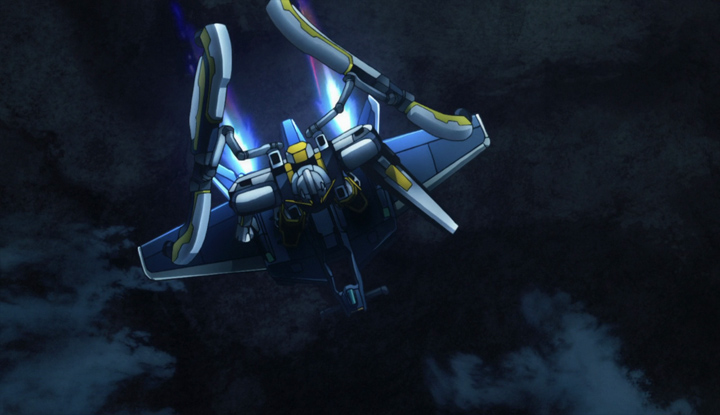 |
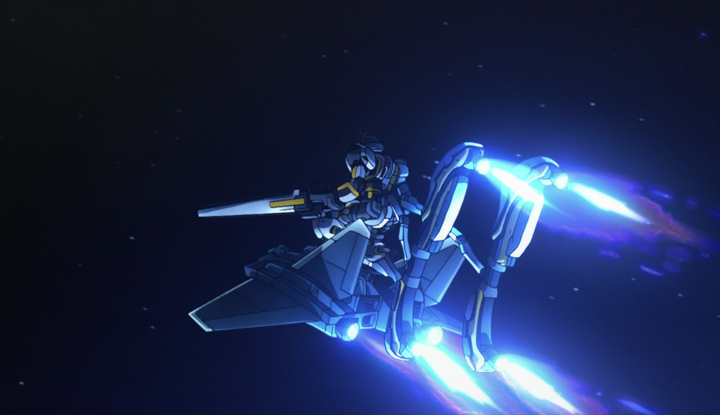 |
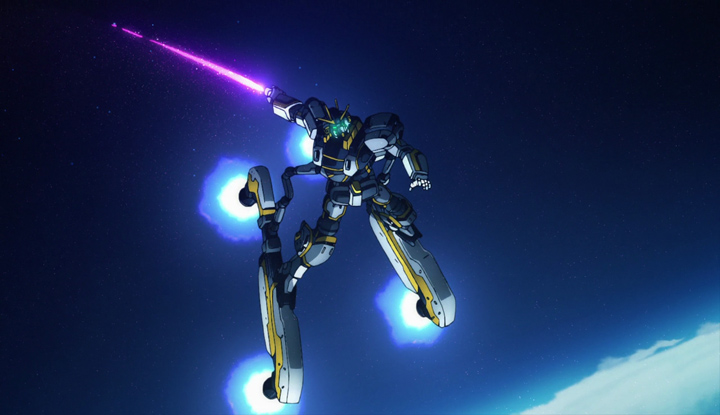 |
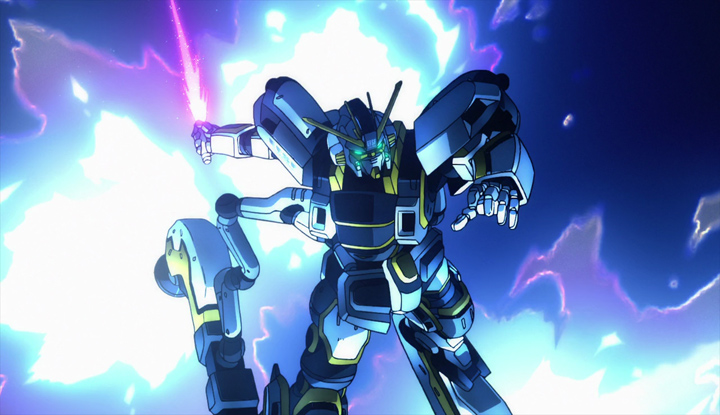 |
|---|
![]()
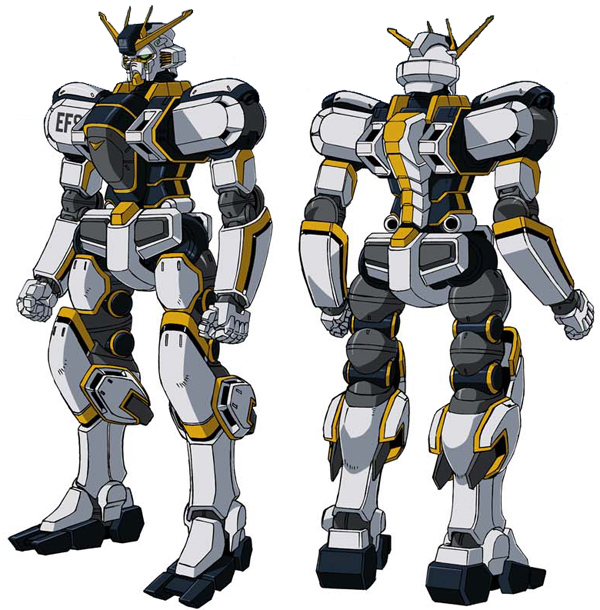
![]()
![]()
The sublegs of the Atlas Gundam connect to the hips of the mobile suits body. Since the connecting arm is movable, it has a high degree of freedom and in addition to the standard placement on the back, it is also possible to connect to the sole of the foot and deploy to the upper part. The box inside the flight unit is equipped with an assault rifle and spare magazines.
 |
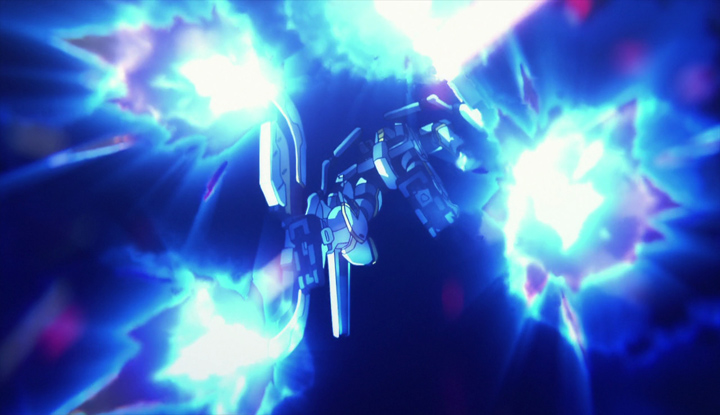 |
 |
|---|
![]()
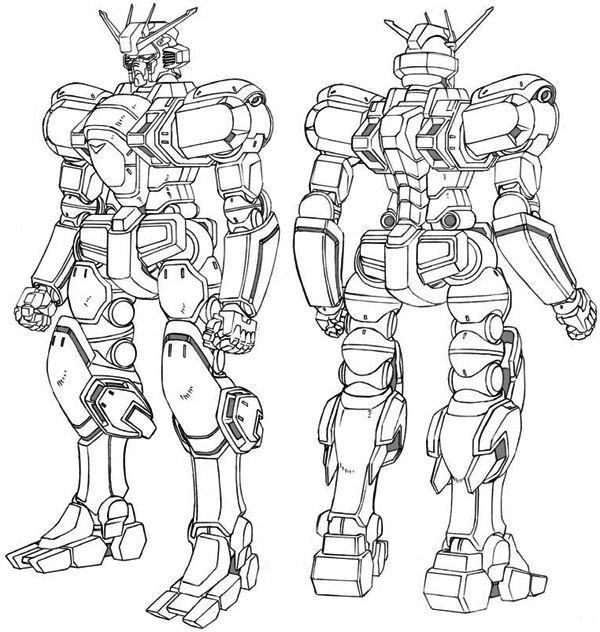
![]()
The Atlas Gundam as seen without its sublegs. Along with its massive silhouette, it possesses an extremely high degree of flexibility through the utilization of spherical joints.
![]()
![]()

![]()
The profile of the fingers on the standard manipilator of Earth Federation Forces mobile suits shows that they are square shaped but these are hexagonal and the shape of the plug at the center of the palm is also different. However, since the basic specifications are compatible, it is possible to equip weapons from other models. The wrist joints is a barrel-type the Atlas Gundam adopts this allowing for a greater range of motion than normal joints.
![]()
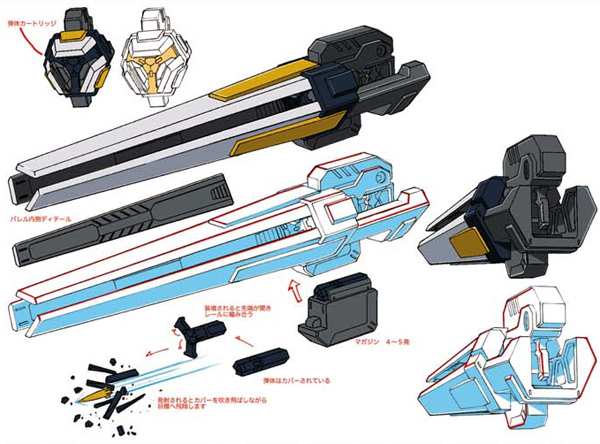
![]()
A weapon that accelerates and fires solid rounds through electromagnetic induction. One of its features is that it is much faster than ordinary solid round type weaponry that use gunpowder as it destroyed a heavily armored Z’Gok with a single shot. The electromagnetic field of this system can be diverted to an electromagnetic pulse guard that protects from missiles and torpedoes. Although it’s a large weapon in the 20m class, the Atlas Gundam can handle it with one hand. When the shell is loaded, the tip opens and locks into the rail. Each cartridge carries 4-5 rounds. When fired, the cover is blown off while it flies towards its target.
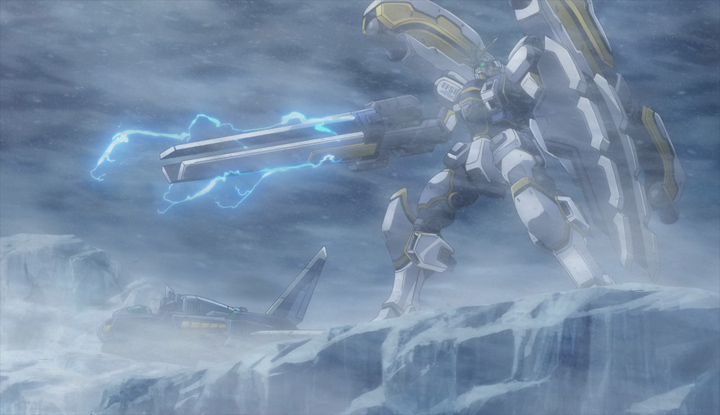 |
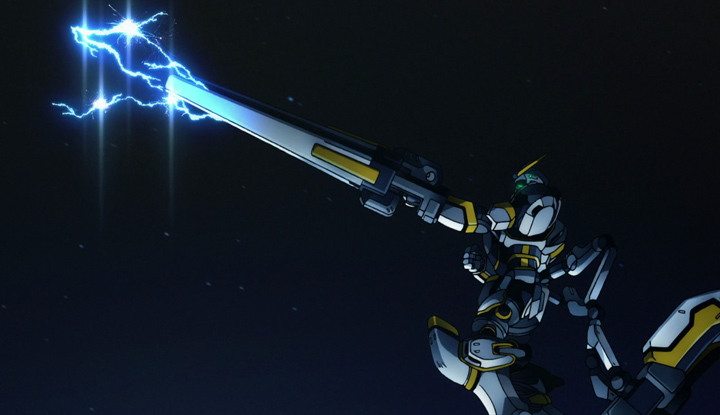 |
 |
|---|
![]()
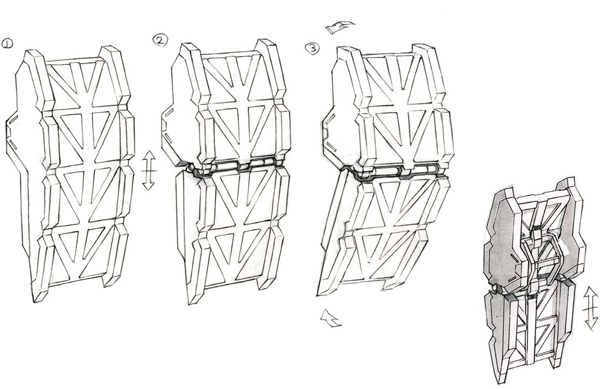
![]()
A large defensive weapon exclusive to the Atlas Gundam. Possessing a defensive area that covers the head and body of the mobile suit, it boasts enough defensive power to withstand beam bombardment from close range. Another noteworthy feature is the installation of Velos Medusa: eight large needle dischargers with 13-tubes each as an auxiliary weapon. The submersable mode in which the sublegs flight unit is positioned on either side functions as an underwater propulsion system.
![]()
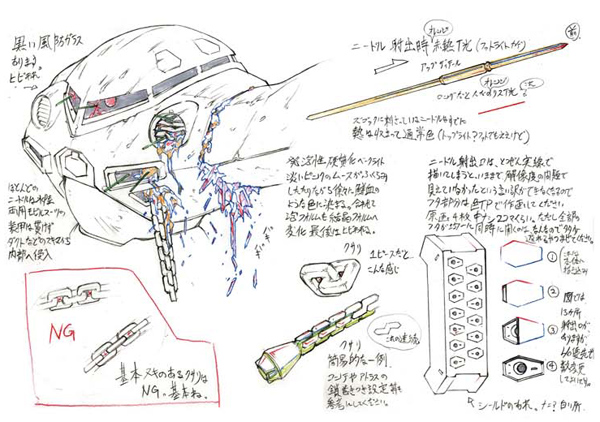
![]()
The needles that make up the Velos Medusa are filled with a foaming hardening bakelite. A pale pink mousse that swells up and gradually dyes in a color like fresh blood. All at once, the foam form changes into a crystallized form where it finally fractures whatever it has touched. Most needles cannot penetrate the armor of amphibious mobile suits so they penetrate from areas such as the glass protecting the monoeye, ducts and other gaps.
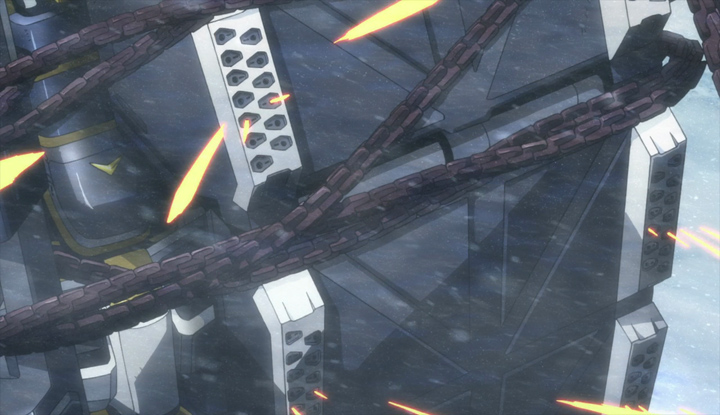 |
 |
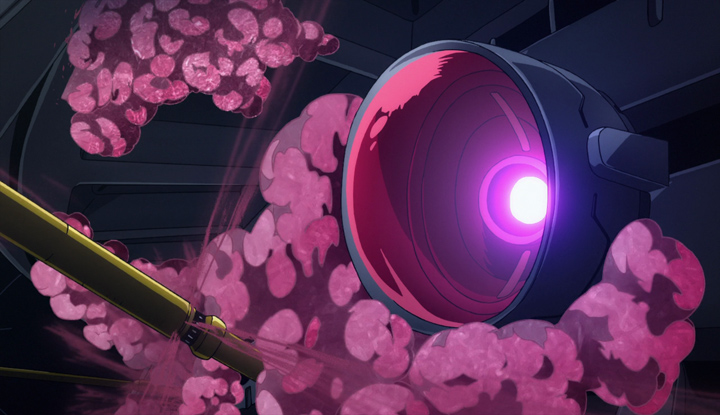 |
|---|
![]()
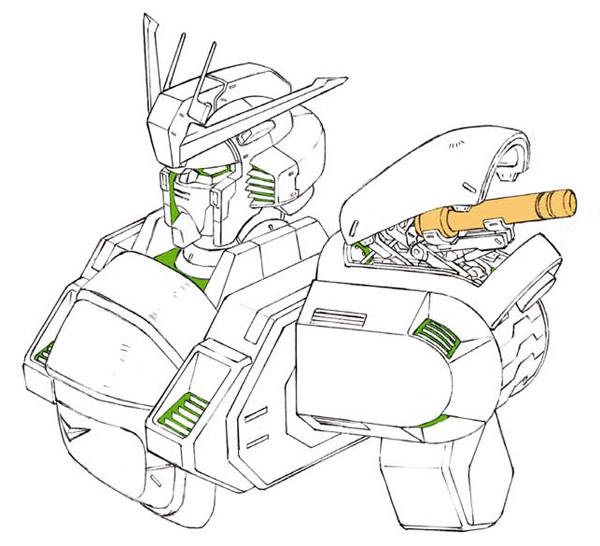
![]()
A hand-to-hand combat weapon that forms a beam into a blade shape. Beam blades are high energy form of Minovsky particles that are about to degenerate so they have the power to melt through a mobile suits armor. When the Atlas Gundam’s thrusters were destroyed in the battle with a Grublo, Io used both of his beam sabers to try and react with the water and propel himself back up to the surface. Unfortunately, the sabers failed quickly due to the temperature of the water and he began to sink again.
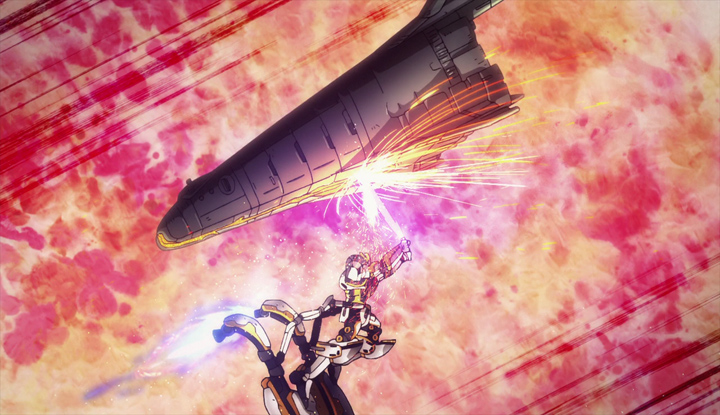 |
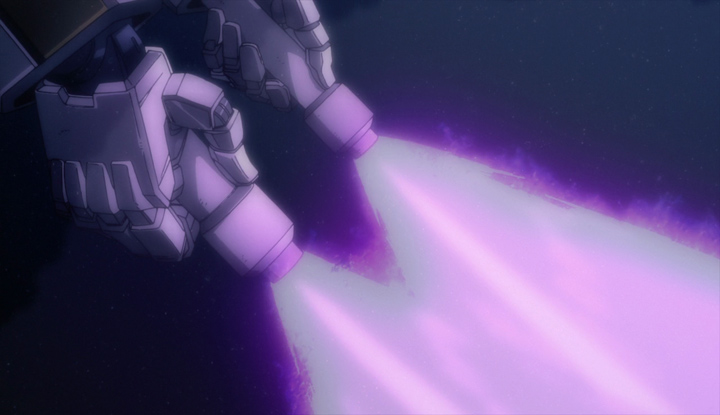 |
|---|
![]()
![]()
A panoramic monitor in the prototype stages was adopted for the Atlas Gundam which drastically improved external visibility. The spherical block that the cockpit is centered in also functions as an escape pod and was already experimenting on a standardized cockpit system for mobile suits in the mid-0080s of the Universal Century. Though it shares next to nothing in terms of equipment with older cockpits, all functions of the mobile suit can be handled without incident via touch and mode switching on the three-panel display on the front of the seat. While later panoramic monitor/linear seat type cockpits would adhere to normal suit and seats oriented to one another, the Atlas Gundam requires the use of a seatbelt.
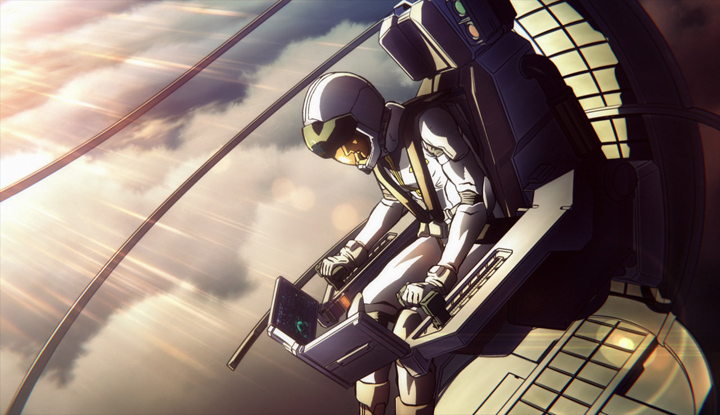 |
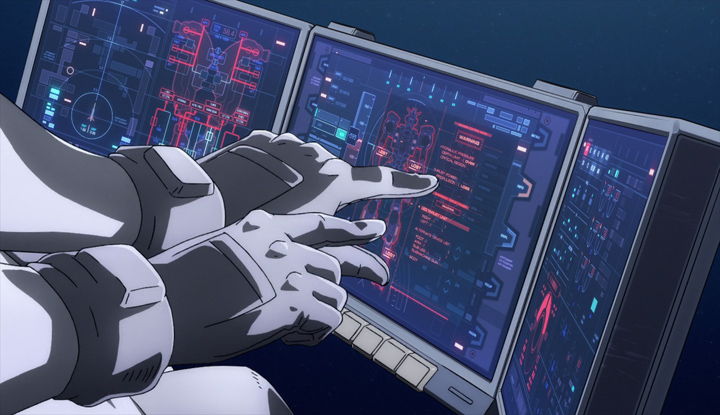 |
|---|
![]()
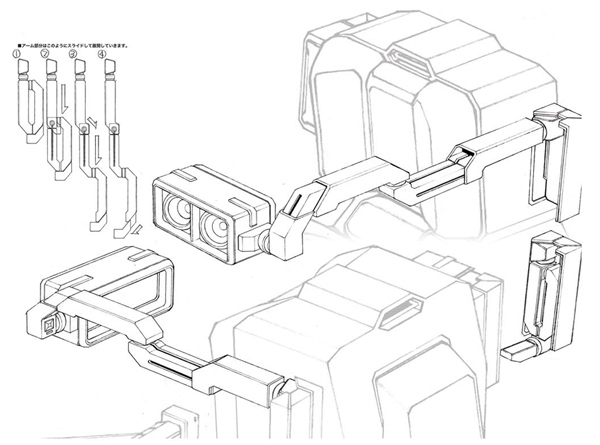
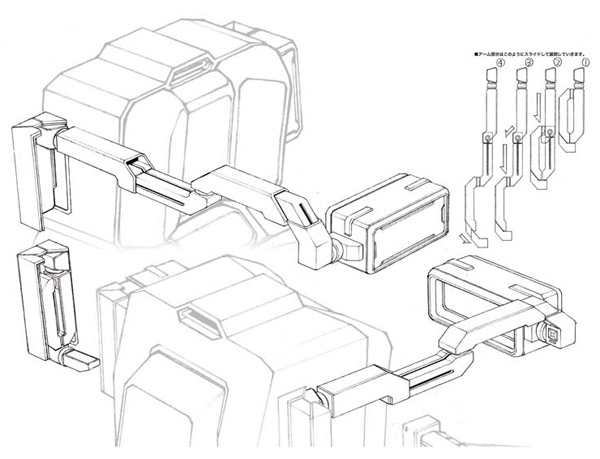
![]()
The new cockpit system has developing parts and the sighting device it adopts is a pull out style much like previous models were. The sighting devices on the Atlas Gundam are unique because there is a different model on either side of the head rest. The binocular model (left side) closely resembles the previous model. It was used for a long range attack with the rail gun during the Antarctic battle and demonstrated necessary and sufficient firing accuracy during a snowstorm.
 |
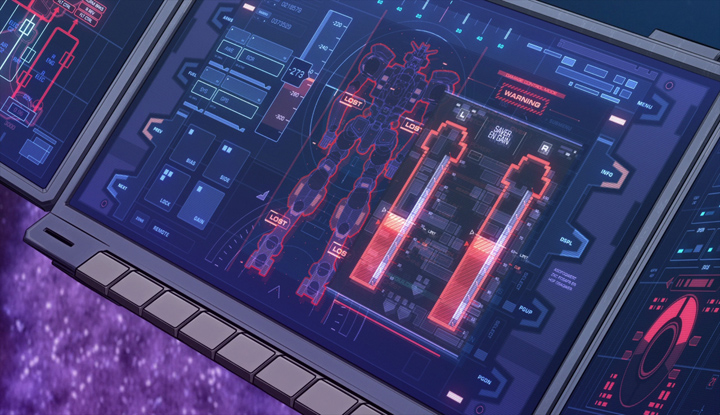 |
|---|
![]()



